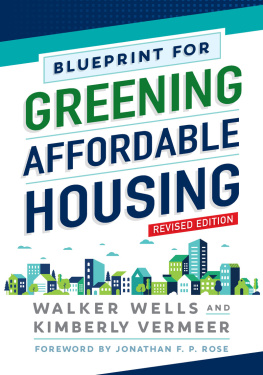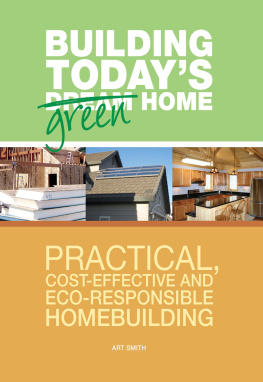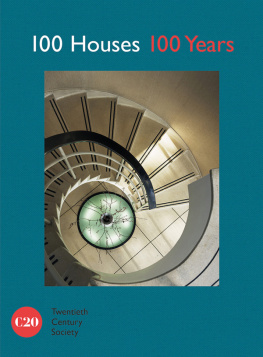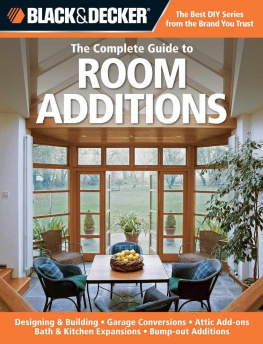DEFECT
New Houses, Units & Additions

D efinition (of defect)
E ffectively
F orces
E thical
C onsultant
T estimony (evidence)
Did you know that most inspections of new houses and additions are carried out without a definition of defect ?
Find out why new houses are not being built well.
Did your new home inspection report have a long list of limiting disclaimers you were not told about?
Learn why building warranty insurance is inadequate.
ARE YOU BUILDING A LEMON, OR DO YOU OWN ONE?
Mark Whitby
Copyright 2014 by Mark Whitby.
Library of Congress Control Number: 2014905755
ISBN: Hardcover 978-1-4931-3707-7
Softcover 978-1-4931-3706-0
eBook 978-1-4931-3705-3
All rights reserved. No part of this book may be reproduced or transmitted in any form or by any means, electronic or mechanical, including photocopying, recording, or by any information storage and retrieval system, without permission in writing from the copyright owner.
Any people depicted in stock imagery provided by Thinkstock are models, and such images are being used for illustrative purposes only.
Certain stock imagery Thinkstock.
Rev. date: 04/16/2014
To order additional copies of this book, contact:
Xlibris LLC
1-800-455-039
www.xlibris.com.au
Orders@xlibris.com.au
522910
Contents
I have inspected just over under construction and recently completed new homes and additions in Victoria. It is likely that I have seen an atypical set of new homes and additions. But even if the quality of the remainder of the homes built in that period now over two million of them is just per cent as bad as the poor quality of housing I have seen in Victoria, then we had better do something about it and pretty soon.
Perhaps I have only seen the worst side of the total equation. In this sample were my 130 homeowner clients, who already knew that their houses had problems. What they spotted, however, was only the tip of the iceberg there were other hidden problems totalling more than six times the cost (on average) to rectify the items that they themselves had discovered.
Anyway, because of my sample being quite small, I have decided not to quantify the problem as I see it to be, concentrating instead on the basic building blocks of quality.
Some recurrent defects are mentioned in the book because they were spotted fifteen or more times in a row. Some defects have appeared in over 120 cases in a row. And these commonplace defects in these new homes had been installed by subcontractors, supervised by builders (or more often by their supervisors), inspected by registered building inspectors (in some cases by the relevant building surveyors themselves), and in many cases, also inspected by building consultants (sometimes on multiple occasions by in-house quality control consultants). And yet all these people missed all these commonplace defects.
It made me wonder why nobody seemed to find these defects and why the authorities never mentioned them. It made me think about just how big the overall problem of poor-quality building work might be. The problem seems to me to have the potential to be so large that it may eventually affect the whole economy and in the not-too-distant future.
So to open peoples eyes, I thought that I would attempt to start a cure to the disease of poor quality from within the industry framework at its very heart by defining the word defect , using my areas of expertise relating to new building work, namely:
Building consulting and building inspection reporting involving new homes, new additions, homes under construction, and established homes (with over thirty years experience).
Building contracts, specifications, and building warranty insurance.
The Building Code of Australia and other related standards.
Quality of building work related to specification requirements.
Precedents formed over certain cases where a great deal of fighting occurred. (It is important that anyone involved in a dispute is aware of pertinent precedents. Learned counsel may be required for this advice.)
I also give advice at the end of the book on what can be done to help the residential building industry cure itself of this now entrenched substantial drop in standards.
Many thanks to the resolve of the great majority of my clients who fought the good fight (most of whom came away with substantial amounts of compensation for their poorly built homes) against a system designed to protect enterprise.
This showed me, and may have shown those involved in and presiding over those cases, that some people really wanted to right a wrong and really cared about their homes.
It also hopefully showed the system that there are houses out there with huge problems deserving of the title lemons or shockers (or doozies , as I sometimes call them).
But very little thanks goes to the system because many of the builders of those shockingly built homes are still building houses today. I see this to be at least partly due to the VCAT (Victorian Civil and Administrative Tribunal) system of compulsory mediations and the common law practice of gags, which together are very protective of builders. I present this as an acknowledgement because it did give me the will to complete this book so that homeowners will not feel completely alone.
Thanks also to the experts and legal people who helped conquer the negators in the system, who were (and still are) prepared to defend the indefensible and fight simply because on average, it pays to fight (owing to the fact that, for whatever reason or combination of reasons, many homeowners give up and accept paltry amounts).
There seem to be an unbelievable number of homes out there, each with an unbelievable number of costly-to-rectify defects. You see some of these on TV. Well, they are just the tip of the iceberg, in my opinion.
Soon after the privatization of building surveyors (and the building inspectors they use) from about 1994, there has been a rapid fall in the quality of work being built, so much so that basic terms incorporated into building standards are in peril of being completely ignored even the word performance, the very basis for the Building Code of Australia.
It seems to me that recent guides and codes have been written or altered possibly to free up the industry from restrictions but with the result that enterprise is protected at the expense of fairness, sometimes even at the expense of safety.
Building contracts are deficient in their definitions, with specifications reduced to the extent that they now commonly contain no workmanship clauses at all. New products are being used whilst tradesmen totally ignore specific manufacturer requirements. I mention a few of these to give you the idea that something is basically wrong with the residential building industry. But reporting the woes of the entire residential building industry is not the intent of this book. I think such a role needs to belong to whatever authority replaces the Building Commission, a commission that needed to change radically in its basic terms of reference.
For starters, attempts to protect negligent businesses at the expense of homeowners has to stop being so one-sided.
Precedents already fought out to conclusion in the Supreme Court under the current Building Act and its related acts may need to be overridden by new legislation enacted to safeguard the rights of homeowners and define future contracts and fairer insurance.
Insurance should cover more and, as a result, may well cost more. But it can and should be made a whole lot fairer and give homeowners of badly built houses the cover they need.
But rather than write an expos on the residential building industry, I wish to start the process of the building industry healing itself from within.
Next page










